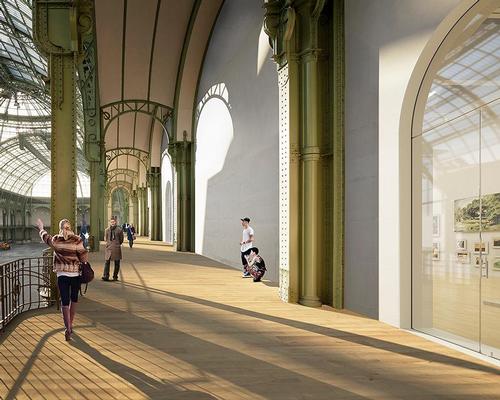16 Feb 2018
Revealed: Paris's historic Grand Palais set for major transformation
BY Kim Megson

The French government has unveiled an ambitious plan to renovate Paris’s landmark Grand Palais and create a cultural boulevard linking the historic site with the Champs Elysees and the River Seine.
First built for the Exposition Universelle world fair in 1900, the giant glass vault of the Palais had a strong impact on the country’s Art Nouveau movement and has become one of the French capital’s best-known icons, as well as home to the Palace of Discoveries science museum and a host of smaller galleries.
The building, however, has not been restored since opening, despite years of attempts to get the project off the ground. That has finally changed, with French culture minister Françoise Nyssen announcing that nearly €500m (US$623m, £444m) will be spent to transform Grand Palais into “a true alliance of arts, sciences and culture.”
The restoration is being overseen by François Chatillon, the chief architect of historical monuments, in collaboration with Benoit Jallon and Umberto Napolitano from design studio LAN.
They will project manage the careful restoration of the Palais and the insertion of a new museum of arts and sciences for children, and design a light-filled pedestrian street to be driven through the complex. The latter will link the building’s various amenities with its main exhibition building via a central concourse.
“The new Grand Palais must embody the France of the 21st century,” said Nyssen. “There is a lot of our country in this building. There is a lot of our country, too, in the choice to carry out these works.
"This choice says something about our relationship to history: our attention to heritage, the legacy we are left with. It says something about our relationship to the world, since this restoration will attract visitors from five continents.
"It also says something about our relationship to art, for which we reserve a space of exception in the heart of the capital.”
The monument will close its doors to the public from 2020, allowing construction to begin, before gradually reopening from 2023.
It will be fully ready by 2024, in time for the Paris Olympic Games, for which it will host the taekwondo and fencing events. Nyssen said the restored venue will also be used for art fairs, parades and institutional summits, attracting as many as four million tourists per year.
The government has committed €128m over five years for the restoration, and is committing a further €160m under its Major Investment Plan for other aspects of the scheme. The Réunion des Musées Nationaux – a cultural umbrella organisation formed by the Paris National Museums and the Grand Palais – will also take out a loan of €150m, while French fashion house Chanel is also known to be donating funds.
This is the latest in a string of major renovation projects announced for Paris in recent years.
Les Halles, once a deeply unpopular concrete shopping complex, was transformed in 2016, with architects Patrick Berger and Jacques Anziutti adding an enormous umbrella-like glass roof, comprising 18,000 pieces of glass supported by 7,000 tonnes of steel.
Meanwhile, Tadao Ando is currently converting the historic Bourse de la Commerce building into a new contemporary art museum for the collection of billionaire businessman François Pinault; while Frank Gehry is creating a museum celebrating French art, aesthetics and urbanity by extensively renovating the former home of the National Museum of Folk Arts and Traditions.
Finally, one of Paris’s most controversial buildings, the Tour Montparnasse skyscraper, is set to undergo a green-tinged transformation, with three architecture studios joining forces to completely overhaul the exterior.
Close Window